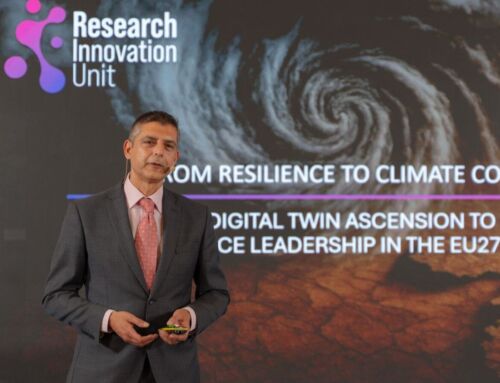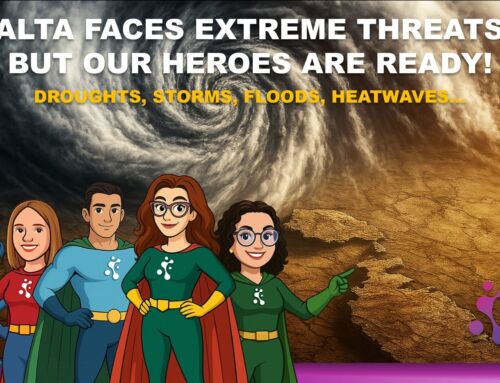As the Mediterranean basin endures yet another devastating weather event, the recent flash floods in Barcelona highlight an urgent need for adaptive strategies to combat the intensifying climate crisis. This catastrophe unfolded shortly after the catastrophic floods in Valencia, where over 200 people lost their lives in late October 2024. The consecutive nature of these disasters underscores the region’s vulnerability to extreme weather, accelerated by global climate change. Understanding the underlying meteorological and socio-political factors is crucial for outlining pathways to protect urban centers and their populations better.
Meteorological Dynamics Behind the Barcelona Floods
The recent flooding in Barcelona resulted from a complex interaction of climatic forces. Primarily, a cut-off low-pressure system, characterized by its detachment from typical jet stream patterns, stalled over the region, causing persistent rainfall. Such systems can remain stationary for extended periods, funnelling moist air from the Mediterranean Sea inland and leading to heavy, sustained precipitation. This atmospheric setup worsens the risk of flash floods, particularly in areas with inadequate drainage or compromised natural water pathways.
The rainfall, described as torrential, triggered landslides that disrupted traffic on major highways and led to the closure of public transportation systems. The State Meteorological Agency of Spain (AEMET) issued red alerts for both Barcelona and the nearby city of Tarragona, highlighting the severity of the situation. Emergency notifications urged residents to avoid dry riverbeds and other typically safe areas that became perilously inundated.
Climate Change as a Force Multiplier
These recurrent flash floods are isolated incidents and manifestations of an evolving climate regime. Climate change acts as a force multiplier, intensifying the frequency and severity of extreme weather. In the case of Southern Europe, the warming trend has amplified the Mediterranean’s predisposition to sudden and severe storms. Warmer air holds more moisture, contributing to increased rainfall volumes when conditions align for precipitation. This results in rainfall episodes that would have been rare outliers only a few decades ago but are now becoming more regular.
Like those in Valencia, Barcelona’s floods reflect this broader trend, which has exacerbated human-induced climate shifts. Rising temperatures, prolonged dry spells followed by intense rain, and weakened soil integrity due to heatwaves are critical factors that make cities more vulnerable. Urban areas with high levels of impermeable surfaces, such as roads and concrete structures, struggle to absorb and redirect sudden influxes of water, leading to rapid water pooling and flash floods.
Societal and Infrastructure Challenges
Beyond meteorology, the response to such disasters often lays bare significant gaps in infrastructure and governance. In Barcelona, heavy rain caused severe flooding in educational institutions and led to the cancellation of classes in over 150 schools. Such disruptions highlight weaknesses in urban planning, where adaptation measures, including the construction of resilient drainage systems and the preservation of natural water buffers, have not kept pace with the growing scale of climate threats.
The suspension of flights at Barcelona El Prat Airport and the halting of commuter trains in northeast Catalonia further underscored the multi-dimensional impact of these floods. Infrastructure networks, vital for everyday functioning, were paralyzed, showcasing how climatic events can cascade into broader economic and social challenges.
The public’s reaction also points to an increased awareness of climate risks. Social media, local protests, and visible discontent expressed by residents, who, in Valencia, directed their frustration at King Felipe VI, signal a collective call for more aggressive governmental action. The Spanish military’s deployment of over 10,000 troops to aid in rescue and relief efforts illustrated the severe human cost of delayed climate preparedness.
Policy Implications and Recommendations
Spain’s experience in 2024 should serve as an urgent case study for policymakers across Europe. While individual events like the Barcelona floods may seem extreme, their increasing regularity necessitates re-evaluating how cities prepare for climate-induced risks. Policy responses should include:
- Investing in Green and Blue Infrastructure: Solutions such as permeable pavements, rain gardens, and the restoration of urban wetlands can absorb excess water and prevent flash floods. Incorporating nature-based solutions (NBS) helps balance urbanization with ecological resilience.
- Early Warning Systems and Public Awareness: Improved meteorological forecasting and community outreach programs can empower residents to take proactive measures during severe weather events.
- Adaptive Urban Planning: City planners must prioritize flood-resistant structures, elevated roads, and enhanced drainage systems. Lessons from cities like Copenhagen, which employs multi-use spaces that convert into water retention basins during storms, can be valuable.
- Legislative Action for Climate Adaptation: National and regional governments must integrate climate risk assessments into urban development policies. This includes zoning laws restricting building in flood-prone areas and mandates for water management systems in new constructions.
The flash floods in Barcelona and the tragic scenes in Valencia are disturbing reminders of Europe’s new climate reality. These events echo warnings from climate scientists that extreme weather is becoming the norm, not the exception. Policymakers, urban planners, and citizens must take collective action to fortify cities against future climatic assaults. Southern Europe’s response to these challenges will shape the continent’s ability to safeguard its communities in an increasingly unpredictable world.
This reflection on the Barcelona floods continues the discourse on extreme weather resilience initiated in our earlier analysis of Spain’s Dana event. The need for robust, forward-thinking strategies has never been more apparent.






